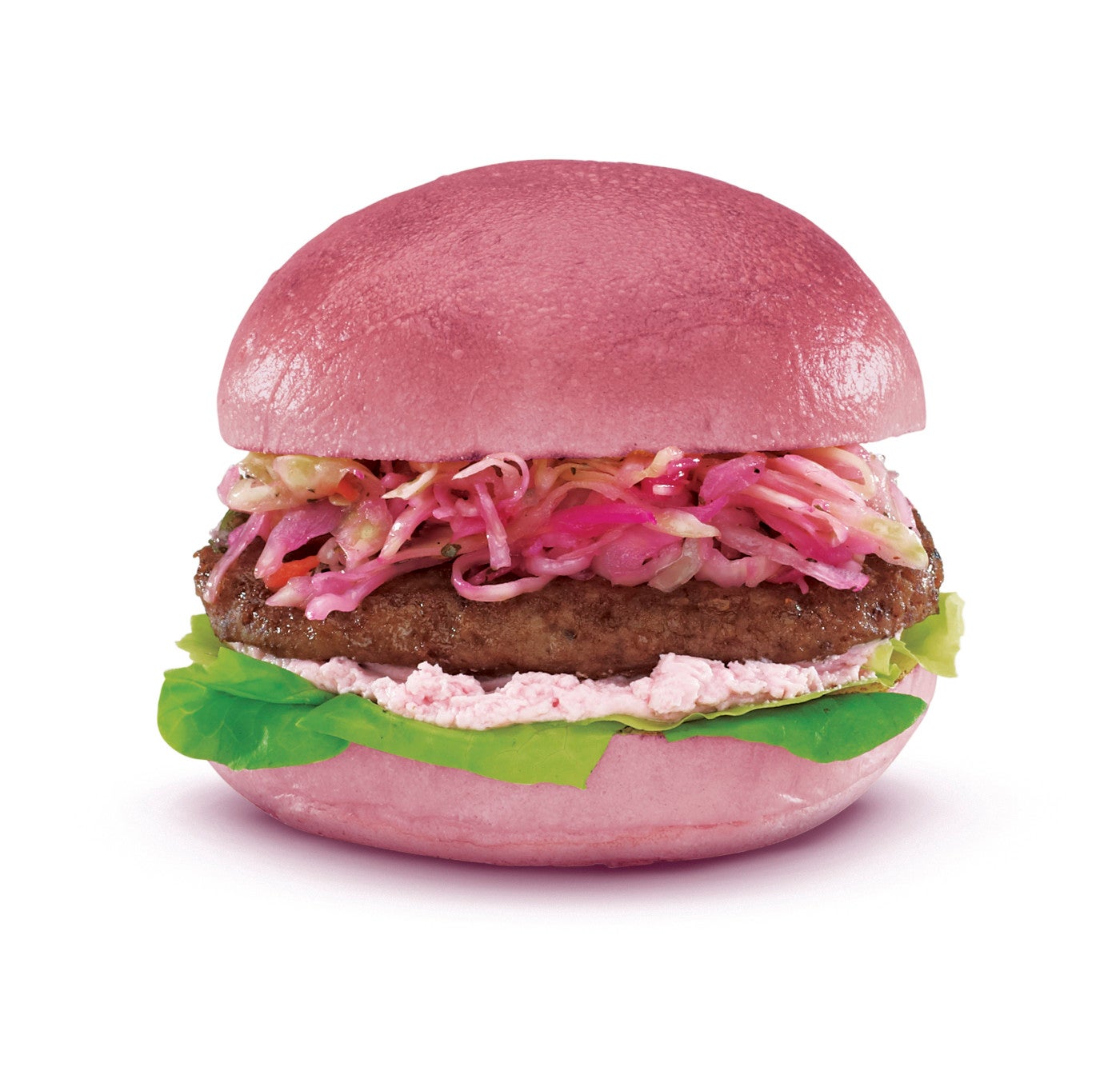Increasingly, food companies seem to manipulate food coloration as a marketing ploy. In 2000, Heinz marketed green ketchup as a way of attracting interest in a humdrum condiment. This was followed by increasingly odd colors such as purple, pink, orange, teal and blue.
Although the campaign had a good run, Heinz reverted to the traditional red after a few years.
Today, oddly colored foods are often tie-ins with other brands. The pink hamburger bun from Hero Certified Burgers, for example, is a tie-in with the "Think Pink" campaign of the Canadian Breast Cancer Foundation.

There is no doubt that such efforts can be effective in driving sales, at least, temporarily. However, they raise a question: When is unusual food coloration a good design choice?
In STV 202: Design and Society, we discuss views of good design on which such gimmicks are categorically repudiated. Dieter Rams, for example, says that splashy stylistic elements are always a mistake. Although he has consumer goods like radios and blenders in mind, perhaps the same aesthetic should extend to foods. Certainly, they are consumer items also.
More to the point, color is often seen as essential to certain food categories. Carrots are orange, butter is yellow, and milk is white.
It could be argued that, in many cases, food color is rather arbitrary. Orange carrots are the color of just one variety, albeit the dominant one. Butter is generally yellowish, though its natural color depends much on the food that its producing cows eat, so it is often "corrected" with food dyes. Also, milk is white—except when it is chocolate milk, in which case it is brown.
Perhaps food coloration should be thought of not so much as an essential feature of some food categories but a variable that may be manipulated according to whatever gustatory goals are desired, just like any food flavoring may be.
So, are oddly colored foods mere gimmicks, extraneous departures from good design? Or, are they just another variable in cuisine and thus proper fodder for innovative food fashioners?